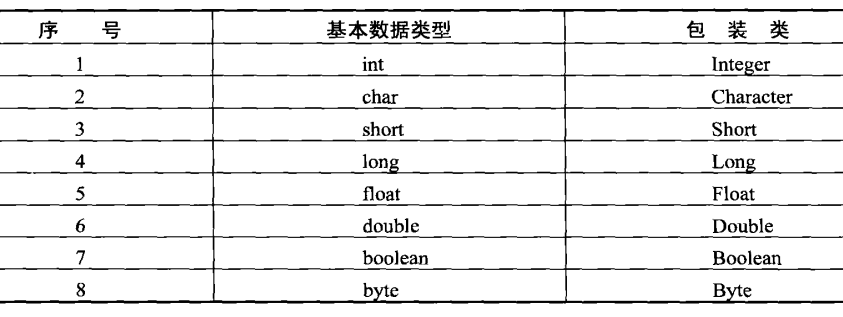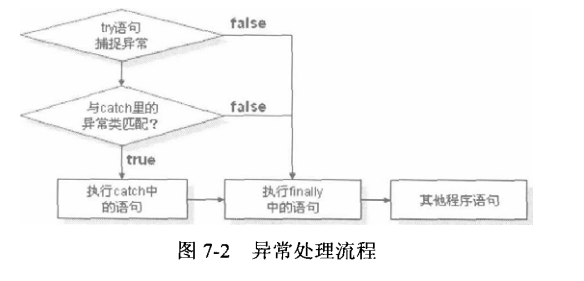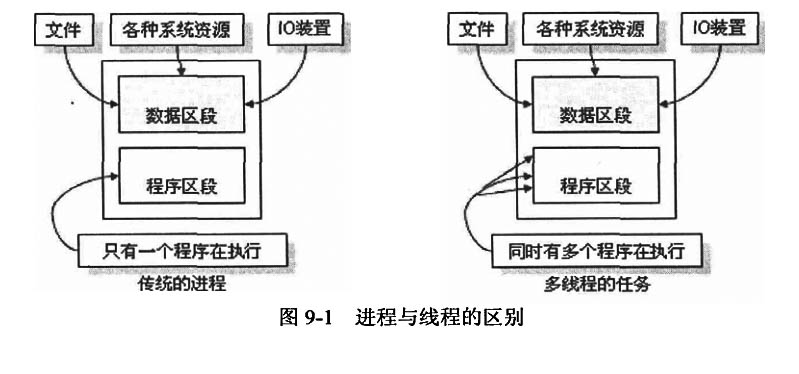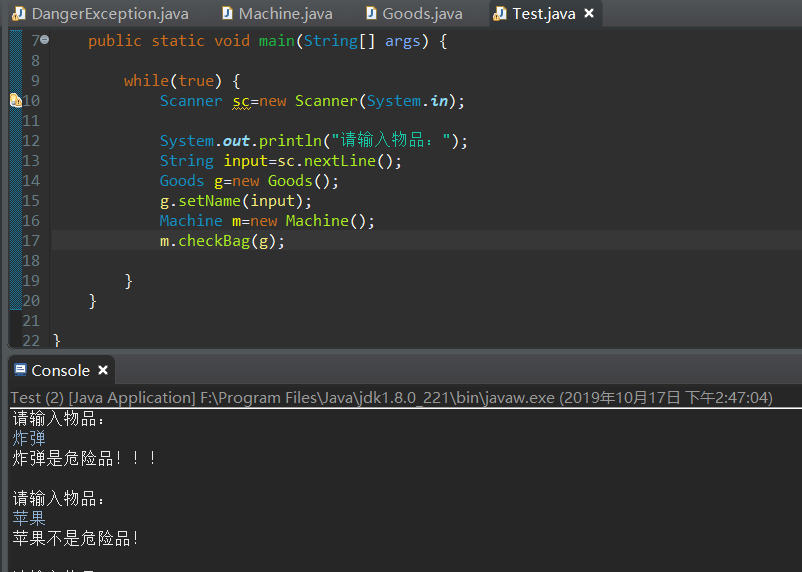第八周课程总结
一、包装类
介绍
装箱与拆箱
应用
二、异常
基本概念
基本格式
异常类的继承结构
throws关键字
throw关键字
Exception类和RuntimeException类
自定义异常类
三、多线程
基本概念
进程
多线程
Java中线程的实现
继承Thread类
实现Runnable接口
Thread和Runnable的区别
一、包装类
1.介绍
8种基本类型变包装类

(1)除了Character 和 Boolean,其它六种都属于Number类的子类。
(2)Character 和 Boolean属于Object类的直接子类
2.装箱与拆箱
装箱:将一个基本数据类型变为包装类
拆箱:将一个包装类变为基本数据类型
3.应用
(1)Integer类(字符串转int型)
public static int pareInt(String s) throws NumberFormatException
(2)Float类(字符串转float型)
public static float pareFloat (String s) throws NumberFormatException
二、异常
1.基本概念
异常是导致程序中断的一种指令流,如果不对异常进行正确的处理,则可能导致程序中断执行。
2.基本格式
try{
//可能出现异常的语句
}[catch{
//编写异常的处理语句
}catch{
//编写异常的处理语句
}.......]
finally{
//一定会运行到的程序代码;
}
异常处理流程

3.异常类的继承结构
在整个Java的异常结构中,实际有两个最常用的类,分别为Exception和Error,
这两个全是Throwable的子类
Exception:一般表示程序中出现的问题,可以直接使用try....catch处理。
Error:一般指的是JVM错误,程序中无法处理。
4.throws关键字
在定义一个方法时可以使用throws关键字声明,使用throws声明的方法表示此方法
不处理异常,而交给方法的调用者进行处理。
【格式】
例 class Math{ public int div(int i,int j) throws Exception{ //方法可以不处理异常 int temp = i/j; return temp; } }
5.throw关键字
使用throw抛出一个异常,抛出时直接抛出异常类的实例化对象即可
【格式】
例 public class ThrowDemo{ public static void main(String args[]){ try{ throw new Exception("自己抛出异常"); //抛出异常的实例化对象 } catch(Exception e){ System.out.println(e); } } }
6.Exception类和RuntimeException类

Exception: 在程序中必须使用try....catch进行处理
RuntimeException:可以不使用,但如果有异常产生,则异常将由JVM进行处理
7.自定义异常类
根据自己的需求定义自己的异常类
例
class MyException extends Exception{ public MyException(String msg){ super(msg) } } public class ThrowDemo{ public static void main(String args[]){ try{ throw new Exception("自定义异常"); //抛出异常的实例化对象 } catch(Exception e){ System.out.println(e); } } }
三、多线程
1.基本概念
(1)进程:进程是程序的一次动态执行过程
(2)多线程:多线程是实现并发机制的一种有效手段

2.Java中线程的实现
(1)继承Thread类
【语法】
class 类名称 extends Ttread{ 属性....; 方法....; public void run(){ 线程主体; } }
(2)实现Runnable接口
【语法】
class 类名称 implements Runnable{ 属性....; 方法....; public void run(){ 线程主体; } }
(3)Thread和Runnable的区别
1.如果通过继承Thread类实现多线程,需要覆写run()方法
2.如果继承Thread类则不适合用于多个线程共享资源,
而实现Runnable接口,可以方便实现
实验报告(六)
一、异常
(一)实验源码
package yichang; import java.util.*; public class Yichang { public static void main(String[] args) { int score[]=new int [6]; System.out.println("程序开始"); System.out.println("请输入下标"); Scanner out = new Scanner(System.in); int n = out.nextInt(); try{ for(int i=0;i<6;i++){ score[i]=i*i; } System.out.println("score["+n+"]="+score[n]+" "); }catch(ArrayIndexOutOfBoundsException a){ System.out.println("数组越界:"+a); }finally{ System.out.println("程序结束"); } } }
(二)实验结果

二、危险品检查
(一)实验源码
异常类
package danger; public class DangerException extends Exception{ String imformation; DangerException(String imformation){ this.imformation=imformation; } void toShow(){ System.out.println(imformation); } }
检查类
package danger; public class Machine{ String name; Goods g; public boolean isDanger(String name) { String score[] = {"炸弹","毒药","刀具","枪支"}; boolean flag =false; for(int i=0;i<score.length;i++) { if(name.equals(score[i])) { flag = true; break; } } return flag; } void checkBag(Goods g){ this.g=g; name=g.getName(); try{ if(isDanger(name)){ System.out.print(name); throw new DangerException("是危险品!!!"+" "); } else{ System.out.print(name); throw new DangerException("不是危险品!"+" "); } }catch(DangerException e){ e.toShow(); } } }
Goods类
package danger; public class Goods{ String name; public void setName(String name){ this.name=name; } public String getName(){ return name; } }
测试类
package danger; import java.util.Scanner; public class Test { public static void main(String[] args) { while(true) { Scanner sc=new Scanner(System.in); System.out.println("请输入物品:"); String input=sc.nextLine(); Goods g=new Goods(); g.setName(input); Machine m=new Machine(); m.checkBag(g); } } }
(二)实验结果
